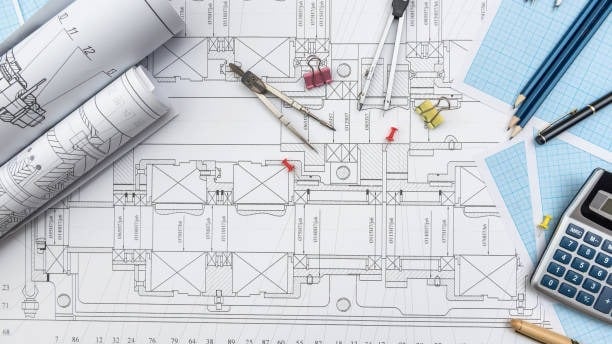Building Bridges: How Engineering Drawings Drive Seamless Project Coordination
In the world of engineering, ideas are powerful — but communication is everything. No matter how groundbreaking a design or how innovative a solution, if teams aren't aligned, projects stall, mistakes happen, and costs climb. That’s where engineering drawings come in: they aren't just technical documents; they are the universal language that holds complex projects together.
Saad Khan
8/17/20242 min read


Building Bridges: How Engineering Drawings Drive Seamless Project Coordination
In the world of engineering, ideas are powerful — but communication is everything. No matter how groundbreaking a design or how innovative a solution, if teams aren't aligned, projects stall, mistakes happen, and costs climb. That’s where engineering drawings come in: they aren't just technical documents; they are the universal language that holds complex projects together.
At its core, engineering coordination is about making sure everyone — from structural engineers to electrical designers, civil contractors to mechanical teams — is working toward the same goal without stepping on each other’s toes. And the primary tool for achieving this? Well-crafted, clear, and timely engineering drawings.
More Than Just Lines on a Page
Engineering drawings are much more than technical sketches or CAD files. They are formal, detailed instructions that define what is being built, how it must be built, and where everything fits. They cover dimensions, materials, tolerances, interfaces, installation procedures — and most critically, how disciplines interact.
Whether it's a Single Line Diagram (SLD) showing the path of electrical power, a piping and instrumentation diagram (P&ID) detailing a chemical process, or a civil general arrangement (GA) drawing laying out site infrastructure, drawings are where technical worlds converge.
Good engineering coordination happens when every stakeholder can look at the same drawing and walk away with a shared understanding — without ambiguity.
The Coordination Workflow: Drawings as the Hub
Early Alignment:
During the early stages, concept drawings provide a foundation. Discussions based on preliminary layouts allow teams to flag potential clashes — whether it's a cable tray crossing a ventilation duct, or a transformer pad overlapping a drainage line.Interface Management:
Engineering drawings become critical for managing interfaces — the physical and functional boundaries between disciplines. Electrical, civil, mechanical, and control systems teams each have their own needs, but drawings ensure their designs are compatible.Design Reviews and Workshops:
Drawings are the centerpiece of coordination workshops. Teams gather around to validate assumptions, correct misalignments, and agree on final details. A well-marked drawing set is often a sign of a healthy, collaborative review session.Issue for Construction (IFC):
Once coordination is complete, drawings formally move to IFC status. Contractors, suppliers, and field engineers rely heavily on the precision of these drawings to execute the work as designed.Living Documents:
Even after construction starts, drawings continue to evolve through redlines, as-builts, and field change documents, maintaining coordination in real time.
Common Pitfalls (and How to Avoid Them)
Version Confusion:
Always work from the latest approved drawings. Proper document control systems are critical to avoid costly errors.Discipline Silos:
Regular cross-disciplinary reviews ensure no team operates in isolation. Drawings must reflect the realities of all systems interacting, not just individual parts.Incomplete Information:
A half-done drawing is more dangerous than no drawing. Engineering coordination relies on complete, reviewed, and validated documents.Ignoring Field Realities:
Drawings must be grounded in site conditions. Surveys, geotechnical reports, and real-world constraints should shape design coordination, not just theoretical models.
The Secret Ingredient: Communication
Ultimately, drawings are a communication tool — but they’re only effective if they are paired with human collaboration. Regular meetings, clear transmittals, drawing reviews, and open dialogue bring the lines and symbols on paper to life.
When used properly, engineering drawings don’t just document a project — they build trust, create clarity, and keep momentum alive from design to commissioning.
Conclusion: Drawings Drive Success
Projects succeed when technical excellence is matched with flawless coordination. And flawless coordination starts — and ends — with well-managed, accurate engineering drawings.
In the intricate dance of engineering disciplines, drawings are the choreography that keeps everyone in step.
Without them, coordination becomes guesswork. With them, complex systems come together like a symphony.
Good drawings aren’t just good practice — they’re the foundation of great engineering.
Primartechnik Pty. Ltd. | Anchored in Australia, Reaching the World
Empowers industries with cutting-edge engineering, sustainable solutions, and expert project delivery to build resilient energy, infrastructure, and industrial systems for a better tomorrow.
© 2017. All rights reserved.
